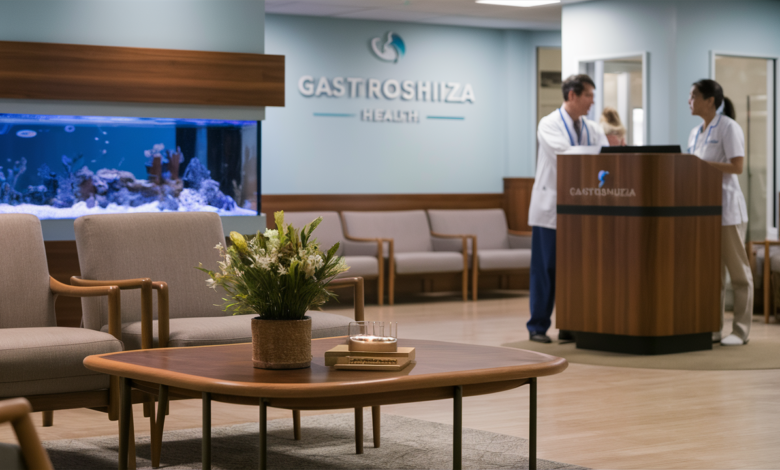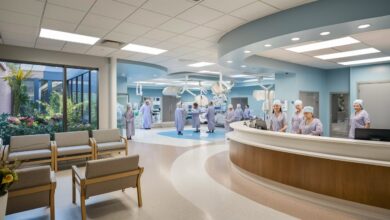Gastroshiza – Causes, Symptoms, Treatment, and Prevention Explained in Detail

Gastroshiza is a serious but treatable congenital condition that affects newborns, in which the baby is born with a defect in the abdominal wall, causing the intestines—and sometimes other organs—to develop outside the body. This rare birth defect can be life-threatening without proper medical care, yet advancements in modern medicine have dramatically improved survival rates. Understanding what gastroshiza is, its causes, symptoms, treatment options, and preventive measures can help parents, caregivers, and medical professionals ensure early diagnosis and the best possible outcomes for affected infants.
In this comprehensive guide, we explore the meaning, causes, risk factors, and modern treatments of gastroshiza, along with how parents can prepare for a healthy recovery journey. Our goal is to provide a deeply informative, keyword-rich article to help readers find accurate and trusted insights about gastroshiza.
1. What Is Gastroshiza? – Definition and Medical Explanation
Gastroshiza, also known as gastroschisis, is a congenital abdominal wall defect that develops during early pregnancy. It occurs when the baby’s abdominal wall does not form properly, leaving an opening—usually to the right of the umbilical cord—through which the intestines, and occasionally other organs like the stomach or liver, protrude outside the body. Unlike similar conditions such as omphalocele, the organs in gastroshiza are not covered by a protective sac, which exposes them directly to the amniotic fluid and increases the risk of inflammation and damage.
The defect typically occurs between the 4th and 8th week of pregnancy, a critical time when the baby’s abdominal wall forms. The exact cause is not always known, but research points to genetic and environmental factors playing a role. Gastroshiza is considered a surgical emergency after birth, but with timely intervention and modern neonatal care, most infants recover fully and go on to live healthy lives.
2. Causes and Risk Factors of Gastroshiza
The causes of gastroshiza are complex and multifactorial. While there is no single definitive reason why this condition occurs, several factors have been linked to its development.
One major factor is abnormal blood flow to the developing abdominal wall during pregnancy, which can disrupt tissue formation. Another important contributor may be genetic predisposition—some families have a slightly higher incidence, though it is not considered purely hereditary. Environmental influences also play a critical role. Maternal smoking, alcohol consumption, drug use, and poor nutrition during early pregnancy have all been associated with increased risk.
Younger maternal age is a well-documented risk factor as well. Studies show that women under 20 years old are more likely to have babies with gastroshiza compared to older mothers. Additionally, exposure to certain medications, infections, or toxins during pregnancy may interfere with fetal development. Understanding these risk factors helps healthcare providers emphasize prenatal care and early screening, which can detect gastroshiza before birth.
3. Symptoms and Diagnosis of Gastroshiza
The most obvious symptom of gastroshiza is visible at birth: the baby’s intestines are outside the abdominal cavity, typically to the right of the belly button. In severe cases, the stomach, liver, or bladder may also protrude.
However, gastroshiza can often be detected before birth through prenatal screening. Routine ultrasound scans during the second trimester can reveal the defect by showing loops of intestines floating outside the baby’s abdomen. Elevated levels of alpha-fetoprotein (AFP) in the mother’s blood may also suggest the presence of an abdominal wall defect, prompting further testing.
Once diagnosed, doctors carefully monitor the pregnancy to prevent complications. After birth, symptoms may include difficulty feeding, swollen intestines, and poor digestion due to inflammation caused by exposure to amniotic fluid. Early detection allows for immediate surgical planning and better neonatal outcomes.
4. Treatment and Surgery for Gastroshiza
The treatment of gastroshiza involves surgical repair shortly after birth. The goal is to safely place the intestines back into the abdomen and close the defect in the abdominal wall. Depending on the size of the opening and the condition of the intestines, doctors may perform the surgery in one or multiple stages.
For smaller defects, primary closure surgery is often possible within the first few hours after birth. The surgeon gently returns the exposed organs into the abdomen and closes the opening. In cases where the intestines are swollen or the defect is large, a staged repair may be required. This involves placing the organs into a protective silo bag, allowing them to gradually return to the abdomen over several days before the final closure.
After surgery, the baby is cared for in a neonatal intensive care unit (NICU). Nutrition is provided intravenously until the intestines heal and can process milk or formula. With proper surgical care, infection control, and nutrition management, most babies with gastroshiza achieve full recovery.
5. Complications and Long-Term Outlook
While gastroshiza is treatable, it can lead to short-term and long-term complications depending on the severity of the defect and the timing of surgery. Common complications include infection, intestinal inflammation, and feeding difficulties during the first few weeks after birth.
Some infants may experience short bowel syndrome (SBS) if a portion of the intestines is damaged or removed, which can affect nutrient absorption. However, with modern neonatal care and nutritional therapy, these issues can often be managed successfully.
Long-term, most children recover fully and grow normally, though regular check-ups are necessary to monitor intestinal function and growth. The overall survival rate for gastroshiza now exceeds 90% in developed healthcare settings, thanks to advances in prenatal diagnosis and surgical techniques.
6. Prevention and Prenatal Care for Gastroshiza
Although there is no guaranteed way to prevent gastroshiza, several steps can reduce the risk. Proper prenatal care plays the most important role. Expectant mothers should avoid smoking, alcohol, and drug use during pregnancy, as these substances are known to increase the likelihood of abdominal wall defects.
Maintaining a balanced diet rich in vitamins, folic acid, and essential minerals supports healthy fetal development. Folic acid, in particular, has been shown to reduce the risk of many congenital abnormalities. Avoiding unnecessary medications and toxic chemical exposure during early pregnancy is equally important.
Regular prenatal screening and ultrasound tests help detect gastroshiza early, allowing medical teams to plan appropriate treatment before delivery. Early diagnosis also provides parents with counseling and information to prepare for postnatal care and surgery.
7. Living with Gastroshiza – Support and Recovery
After surgery, babies with gastroshiza require special medical attention to ensure healthy recovery. Parents often work closely with pediatric surgeons, nutritionists, and neonatal nurses to support the baby’s healing process. Feeding is introduced slowly as the intestines regain function, and careful monitoring is essential to prevent infection or complications.
Emotional and social support is also vital for parents. Many hospitals offer counseling and support groups for families coping with congenital conditions. With patience, love, and proper care, most infants overcome the challenges of gastroshiza and lead normal, active lives.
Conclusion
Gastroshiza is a rare yet manageable congenital condition that requires immediate medical attention and expert surgical care. Early diagnosis, proper prenatal monitoring, and advanced neonatal treatment have made it possible for most affected infants to recover fully and thrive. By understanding the causes, symptoms, and treatments of gastroshiza, parents and healthcare providers can ensure that babies born with this condition receive the best possible start in life.
The story of gastroshiza is not one of despair but of medical triumph—showing how science, compassion, and innovation continue to save lives and restore hope.
Frequently Asked Questions (FAQ)
1. What causes gastroshiza?
Gastroshiza is caused by abnormal development of the baby’s abdominal wall during early pregnancy, possibly influenced by genetics, poor blood flow, or environmental factors.
2. Can gastroshiza be detected before birth?
Yes. Prenatal ultrasounds and elevated maternal AFP levels can detect gastroshiza as early as the second trimester.
3. Is gastroshiza treatable?
Yes. Gastroshiza can be corrected through surgical repair shortly after birth, with excellent survival and recovery rates.
4. Can gastroshiza be prevented?
While it cannot always be prevented, good prenatal care, avoiding harmful substances, and taking folic acid can significantly reduce the risk.
5. What is the long-term outlook for babies with gastroshiza?
Most babies recover fully after surgery and go on to lead healthy, normal lives with proper medical care and follow-up.



